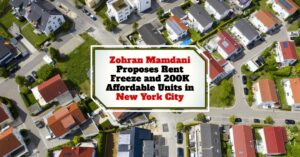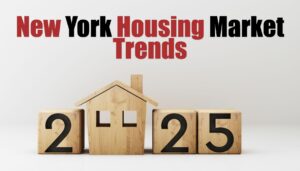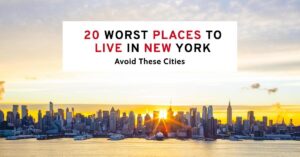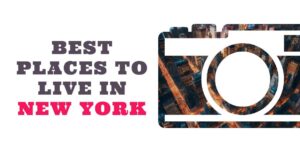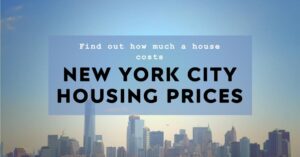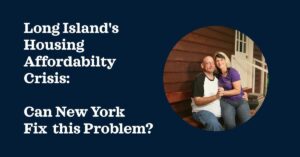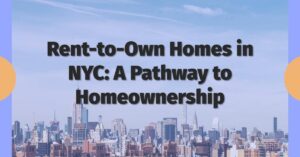New York City just elected its 110th mayor, Zohran Kwame Mamdani, and his win is a major turning point. On November 4, 2025, this 34-year-old Democratic Socialist, formerly a state assemblyman, beat out big names like former Governor Andrew Cuomo and Curtis Sliwa, becoming not only the youngest mayor in over a century but the city's first Muslim and South Asian leader.
His victory signifies a powerful shift, especially concerning his ambitious plans for tackling the city's housing crisis. Mamdani's core promise is Housing By and For New York, a plan that aims to create 200,000 new affordable homes and implement an immediate rent freeze on stabilized apartments. This bold agenda is already sparking debate about whether it’s the solution the city desperately needs or a risky experiment.
New York City Housing Market Poised for Rent Freeze and Affordable Homes
Who is Zohran Mamdani? More Than Just a Young Politician
I've been following New York politics for a while, and Zohran Mamdani's rise is something special. He arrived in the city from Kampala, Uganda, as a child with his filmmaker mother, Mira Nair, and his academic father, Mahmood Mamdani. Growing up in Manhattan, he attended schools like the Bank Street School and the Bronx High School of Science, mixing with a creative crowd while developing a strong sense of social justice. After graduating from Bowdoin College, he worked to help people facing foreclosure. In 2020, he won a seat in the state assembly, making a name for himself by fighting for rent control and police reform.
His campaign for mayor really took off by using social media, especially TikTok, where he’d share short videos about everyday NYC problems like subway delays and evictions. This connected with a lot of younger voters and working-class families. He got the backing of big names like Bernie Sanders and Alexandria Ocasio-Cortez, and really positioned himself as the voice of the people against the old political guard. His message of “a dignified life for all New Yorkers” resonated deeply, especially in a city where finding an affordable place to live feels like a constant battle. Of course, his past comments have drawn criticism, but his supporters see his immigrant background and focus on fairness as strengths that will unite the city.
The NYC Housing Crisis: A Problem That's Getting Worse
Let's be real, New York City's housing situation is a mess. It's like everyone wants to live here, but there just aren't enough places to go around. The numbers don't lie: the city needs about 500,000 new housing units by 2030, but only built around 40,000 in 2024. This shortage means prices keep going up. Median asking rents hit $3,491 in mid-2025, squeezing the wallets of most New Yorkers. It’s estimated that over half of NYC households are spending more than 30% of their income on rent, which is the standard definition of being rent-burdened.
This has a ripple effect, pushing more people into homelessness. In 2024, over 630,000 households applied for limited rental assistance, showing just how desperate things have become. Things like the high cost of building (over $400,000 per unit), zoning rules that require parking spaces (taking up valuable building space), and the continuation of old, disconnected policies mean we haven't built enough homes for decades, especially affordable ones. The 2019 Housing Stability and Tenant Protection Act helped tenants, but it didn't stop rents from climbing.
Here’s a look at how rents have been climbing:
| Year | Median Gross Rent (NYC) | Year-Over-Year Change | Key Challenge Highlighted |
|---|---|---|---|
| 2019 | $1,500 | +3.4% | Pre-pandemic stability. |
| 2021 | $1,620 | +4.5% | Remote work increases demand. |
| 2023 | $1,850 | +10.1% | Evictions rise significantly. |
| 2025 (Q1-Q2) | $3,397-$3,491 | +3.7-5.6% | Operating costs rise; tight market. |
As you can see, rents have almost doubled since 2019, way faster than most people's salaries are increasing. Families earning less than $70,000 a year are hit the hardest.
Mamdani's “Housing By and For New York” Plan: A Deep Dive
Mamdani's housing plan, called “Housing By and For New York,” is built on the idea that government should be the primary driver of creating affordable housing, not private developers who he believes prioritize profits. It’s a huge commitment: $100 billion over 10 years. This money will come from a mix of municipal bonds and existing funds. The goal is ambitious: to triple the production of rent-stabilized, union-built units to 200,000. This plan is targeted at families, seniors, and homeless individuals.
Let's break down the key pieces:
- Rent Freeze and Tenant Power: A major promise is to immediately freeze rents on rent-stabilized apartments. This would protect about 2 million tenants from potential rent hikes of 3-7.75% that the Rent Guidelines Board might allow. Mamdani also wants to work with Albany to make all new buildings rent-stabilized, closing loopholes that developers use. The idea is that while landlords' costs are going up, the city can step in with subsidies to cover the difference, preventing tenants from facing steep increases. He’s also committed to cracking down on landlords who discriminate against tenants using housing vouchers, making sure that all assistance programs are used effectively.
- Massive Public Investment: Mamdani is looking to double the capital investment in NYCHA (New York City Housing Authority) to $10 billion annually. This is crucial to fix the thousands of units falling into disrepair due to years of underfunding. He also plans to:
- Expand programs like ELLA (for families earning under $72,000) and SARA (for senior housing) to create 100% affordable developments.
- Speed up approvals for projects like the redevelopment of Greenpoint Hospital.
- Use underused NYCHA land, like empty parking lots, to build new housing, ensuring these are union-built and environmentally friendly.
This massive building spree will be funded through bonds, public land, and a slight increase in the corporate tax rate, which he believes can raise $2 billion a year without taxing residents more.
- Smarter City Planning: Mamdani is calling for a comprehensive citywide plan that connects housing with transportation, schools, and climate goals. He wants to reform the zoning code, which he argues is biased and prevents development in many neighborhoods. Key changes include getting rid of parking minimums (those rules that force new buildings to have a certain number of parking spots, which takes up valuable space) and encouraging development near transit hubs. This is about creating more housing where people need it and where they can access jobs and services easily.
Could This Actually Work? The Challenges and Criticisms
Mamdani's plan is inspiring to many, especially those who feel left behind by the current housing market. Supporters believe it could create tens of thousands of jobs and help hundreds of thousands of lower-income residents find safe, affordable homes. They point to his deep ties with community groups as a strength that can help push through bureaucratic hurdles.
However, there are serious questions and concerns. Some economists worry that a strict rent freeze, like ones seen in other cities such as San Francisco in the past, could actually discourage new construction and lead to a decline in the quality of existing housing because landlords have less incentive to invest. They also warn that it could create a black market for housing or lead to longer waiting lists for apartments, similar to what happened in cities that implemented similar policies decades ago.
Here are some of the big hurdles Mamdani will face:
- Getting Approval from Albany: The state government, specifically Governor Hochul, has resisted expanding rent control measures. Mamdani will need to do a lot of convincing and negotiating to get state-level support for his housing agenda.
- Federal Funding: His plans for NYCHA, which desperately needs billions in repairs, rely heavily on federal funding. If national politics shift in a way that cuts federal aid, his ability to fix public housing could be severely impacted.
- Landlord Pushback: While the plan aims to help tenants, it could put a significant strain on smaller landlords who own many rent-stabilized units. They might face financial difficulties, potentially leading to more evictions or a reluctance to maintain their properties.
- The Sheer Cost: A $100 billion price tag is enormous, even for a city like New York. Funding this will require careful financial planning and could be jeopardized by economic downturns or changes in tax revenue.
The NYU Furman Center’s research suggests that simply freezing rents isn't enough; you need to build more housing to truly solve affordability. Mamdani’s approach tries to do both, but the success will depend on how well these two parts work together and how quickly they can show results, like getting those first new affordable units built and occupied.
What Does This All Mean for New York City?
If Zohran Mamdani can pull off his housing agenda, it could fundamentally change what it means to live in New York City. It could become a more inclusive place where people can afford to stay and raise their families, potentially slowing down the exodus of residents who are leaving because of high living costs. We might see a city where housing is seen more as a fundamental right, like access to clean water or parks, rather than just a commodity. This could help reduce the racial and economic inequalities that have plagued the city for so long.
But there's also a risk. If the plans aren't executed well, or if the economic challenges are too great, New York could face serious financial trouble, similar to the crisis it experienced in the 1970s. The success of his agenda will likely depend not just on his vision, but on his ability to build strong coalitions with different political groups, including more moderate voices in city government.
For tenants, this promises much-needed relief. For property owners, it means a mix of potential support through subsidies and increased regulation. For the city’s economy, there’s the promise of construction jobs and stimulus, but also the uncertainty of how these new policies will affect the broader real estate market.
As Mayor-elect Mamdani prepares to take office on January 1, 2026, everyone in New York City will be watching closely. His election is a clear signal that voters are tired of the housing crisis and ready for bold solutions. The next few years will show whether his ambitious vision can truly create a more affordable and equitable New York for everyone. The real work, the implementation, is what matters most now.
Invest in Real Estate That Grows Beyond Rent-Freeze Zones
With proposals like NYC’s rent freeze and new affordable housing plans on the horizon, now’s the time to diversify your portfolio into growth-oriented rental markets where cash flow and property values remain strong.
Work with Norada Real Estate to find profitable turnkey rentals in stable, landlord-friendly regions—so you can build wealth without being limited by local housing policy shifts.
NEW TURNKEY OPPORTUNITIES AVAILABLE NOW!
Talk to a Norada investment counselor today (No Obligation):
(800) 611-3060
Read More:
- NYC Housing Market: Prices, Trends, Forecast 2025-2026
- How Much Do Real Estate Agents Make in New York?
- 5 Predictions That Will Define the NYC Housing Market in 2025
- Albany Housing Market Trends and Forecast for 2025
- Syracuse Housing Market Trends and Forecast for 2025
- NYC Housing Market Report: Rent Prices Are Skyrocketting
- Rent-to-Own Homes in NYC: A Pathway to Homeownership
- Long Island's Housing Crisis: Can New York Fix This Market
- New York Housing Market: These 3 Cities Are Hottest in the Nation
- New York Real Estate Market: Should You Invest Here?
- Worst Places to Live in the New York State
